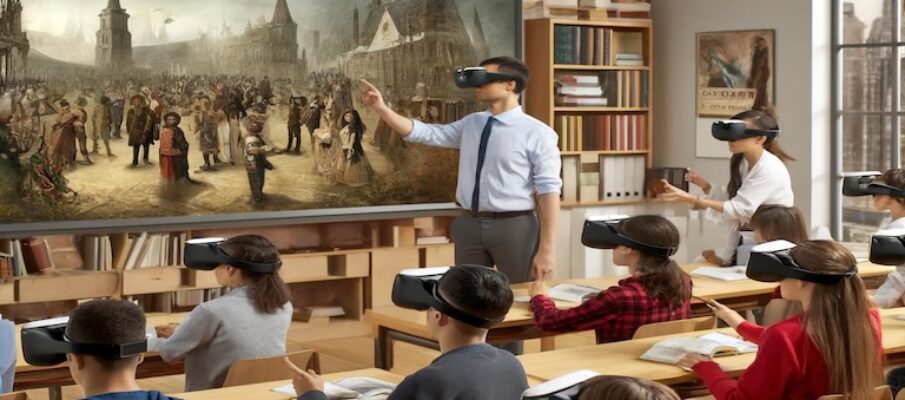Introduction
Augmented Reality (AR) has emerged as a transformative technology in various sectors, and education is no exception. By superimposing digital information onto the real world, AR provides a dynamic new way to engage students and enhance their learning experiences. This comprehensive guide explores the integration of AR into classrooms, online learning, and educational applications, aiming to highlight the practical benefits and innovative tools associated with this technology.
The Role of AR in Modern Education
Augmented Reality offers an interactive experience of a real-world environment where objects that reside in the real world are enhanced by computer-generated perceptual information. In the realm of education, this technology serves as a bridge between traditional learning methods and future advancements, enhancing both teaching and learning processes by making them more interactive and accessible.
Benefits of AR in Education
Enhanced Engagement and Interaction
AR transforms traditional learning environments by making them more interactive. It allows students to visualize concepts through 3D models, making complex information easier to understand. This not only improves engagement but also helps in retaining information effectively.
Increased Accessibility
With AR, educational content is more accessible to diverse learners, including those with disabilities. It supports visual, auditory, and kinesthetic learning styles, providing a multisensory learning experience that can be tailored to individual needs.
Improved Collaboration
AR applications can promote teamwork through collaborative learning experiences. Students can work together in the same physical or virtual space, discuss their observations, and solve problems collectively.
Implementing AR in Classrooms and Online Learning
AR Tools and Applications
Several tools and applications are available to facilitate AR experiences in educational settings. Some popular ones include:
- Google Expeditions: Allows educators to guide students through collections of 360° scenes and 3D objects, pointing out interesting sites and artifacts along the way.
- Zappar: A simple tool that can bring textbooks to life with videos and animations that appear on the pages.
Developing AR Content for Education
Creating AR educational content requires understanding both the subject matter and the technology. Educators can start with simple projects using platforms like ARKit and ARCore which do not require extensive technical knowledge.
Integration Strategies
Integrating AR into education isn’t just about the right tools, but also about strategically planning how these tools fit into the curriculum. Teachers should consider AR as a supplement to traditional teaching methods rather than a replacement.
Case Studies: AR in Action
Case Study 1: AR for Historical Education
A middle school history teacher used an AR app to simulate historical events. Students could visualize battle scenes and historical maps overlaid onto their classroom environment, making history lessons much more vivid and engaging.
Case Study 2: AR in Science Classes
A high school science teacher implemented an AR program to teach human anatomy. Students could see 3D models of the human body and interact with different systems by pointing their devices at specific markers on a poster.
Challenges and Considerations
While AR holds substantial promise, there are several challenges to its widespread adoption:
- Technical Issues: Ensuring all students have access to AR-compatible devices can be a hurdle.
- Development Costs: Creating high-quality AR experiences can be costly and time-consuming.
- Teacher Training: Educators must be properly trained to integrate AR tools effectively into their teaching.
Future Directions
The future of AR in education looks promising with advancements in technology making AR more accessible and effective. Ongoing research and development are expected to lower costs and enhance the educational value of AR applications.
Conclusion
Augmented Reality is poised to revolutionize the educational landscape by providing immersive learning experiences that were unimaginable a few decades ago. As this technology continues to evolve, it holds the potential to significantly enhance educational outcomes and prepare students for a future where digital and physical worlds converge.
This extensive look into AR in education highlights its benefits, showcases real-world applications, and discusses the practical steps educators can take to integrate this technology into their teaching strategies effectively. By embracing AR, educators can enrich the learning environment and offer their students a unique and compelling educational experience.
